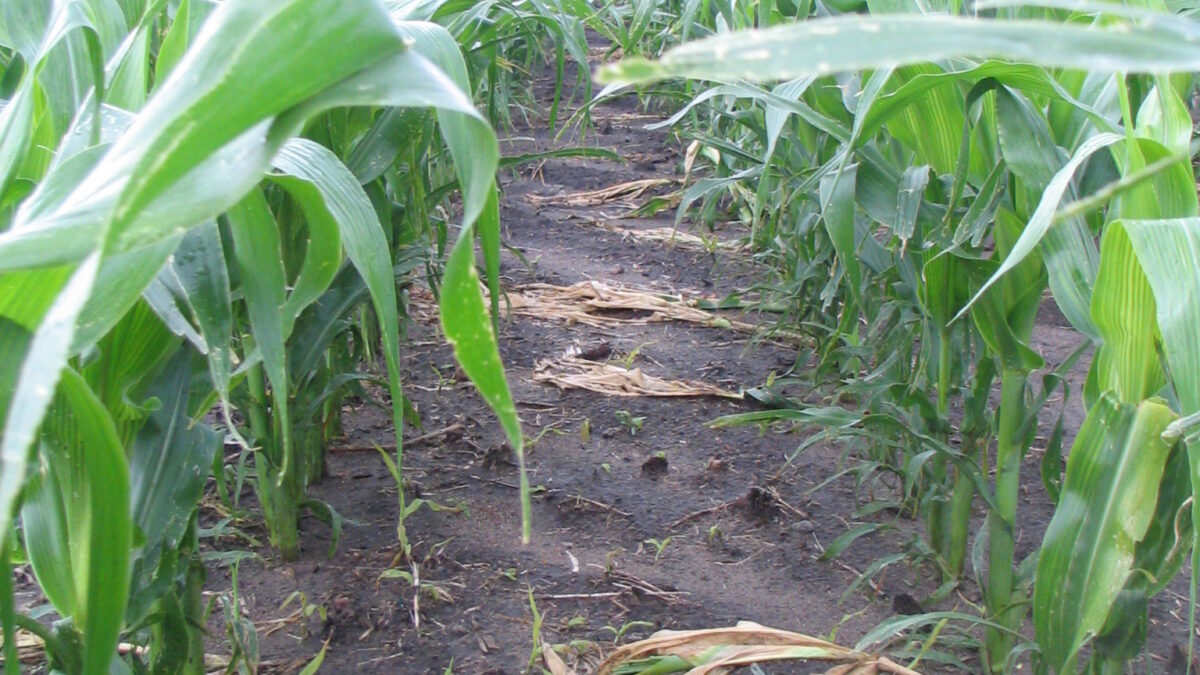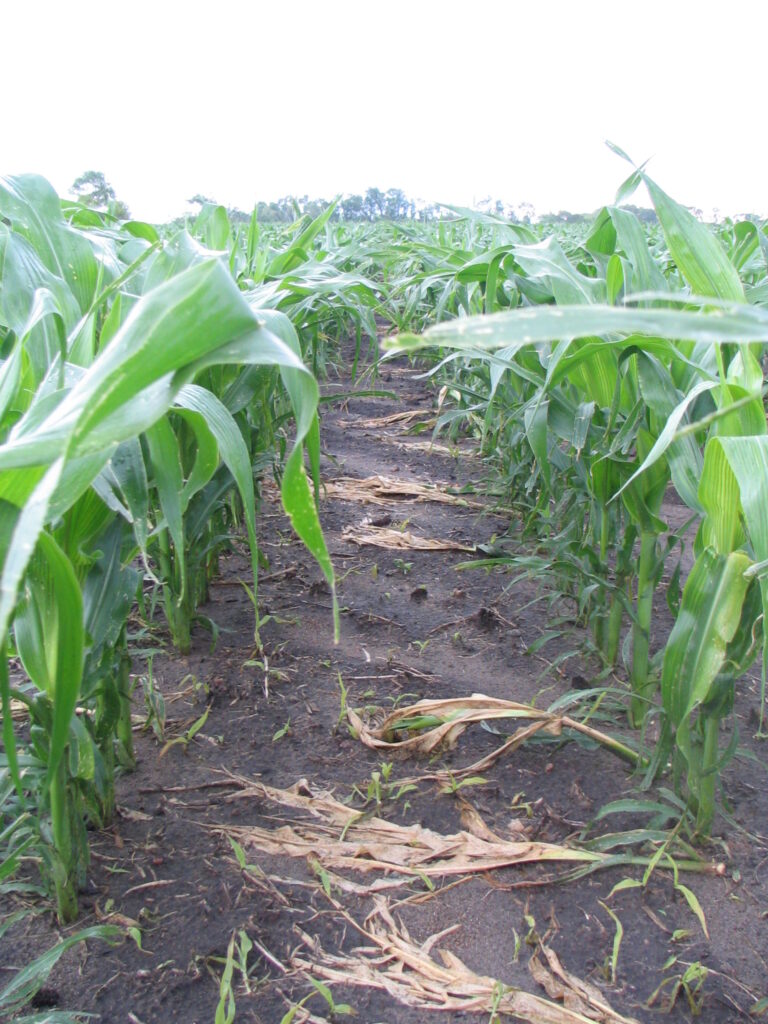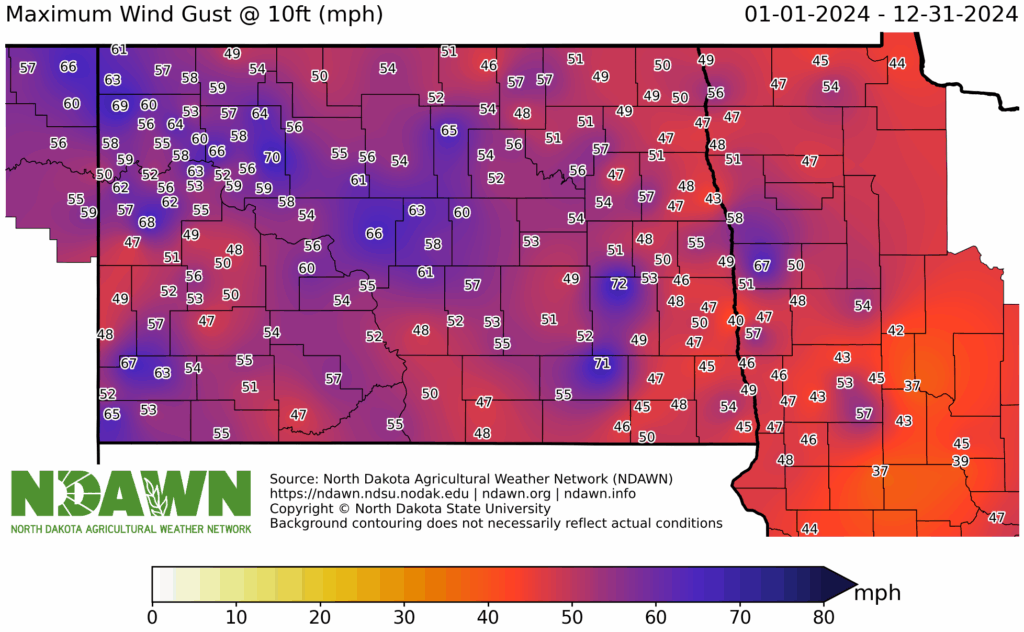Green Snap: Is High Risk Worth High Reward?


Green snap is characterized as stalks that are broken, typically at a node.
As a corn product manager, green snap is the one event that concerns me the most about a corn hybrid during the summer. Green snap can happen anywhere corn is grown, and no hybrid is completely immune.
Beginning at the V5 growth stage, green snap becomes and remains a risk until shortly after tasseling. From V5 onward, plants actively grow using their own root system to fuel the energy needed to grow.
I don’t worry about green snap during cloudy or rainy weather. However, when we get three consecutive days above 80°F and plants are rapidly growing, the risk increases.
During these times of rapid cell division, the cell walls fail to keep up with the strength needed to support the plant during inclement weather. Simply put, the plant is growing so quickly it can’t absorb the nutrients it needs to fortify the plant against strong winds.
The factors that contribute to good corn-growing conditions and increased yields – warm temperatures, good soil moisture, abundant fertilizer and a growth regular herbicide – can also increase the risk of
green snap.
Every hybrid Peterson Farms Seed offers has a good green snap score. If it doesn’t test well in our replicated research program, it doesn’t make the lineup. It’s that important. The cost of green snap is too great to risk burdening growers with hybrids that may go down from weather.

The map above shows the 2024 max wind speeds at 10’ across the NDAWN system, courtesy of Daryl Ritchison.
That said, strange things happen with the weather in our region. Thunderstorms with winds reaching 60 miles per hour occur frequently across the tri-state.
No hybrid should experience significant green snap issues in those conditions, and our selection process ensures any hybrids unable to withstand such winds are eliminated.
In storms reaching 70 miles per hour, individual hybrid performance begins to show. Roughly 90% of hybrids should withstand these conditions.
However, at wind speeds above 80 miles per hour, all bets are off. Over the last 15 years, I’ve fielded a few complaints where hybrids have gone down in winds reaching and exceeding 80 miles per hour. At that point, it’s impossible to evaluate hybrid performance because no hybrid from any brand can reliably withstand such extreme weather.
One of the best remarks I’ve heard about green snap came from a grower whose TV antenna crashed during a storm. He wasn’t going to blame the hybrids because the antenna was rated for winds up to 100 miles per hour. On another occasion, I responded to call where an F4 tornado (with 175 mph winds) had flattened corn and destroyed oak trees in the corner of a field. I’m sorry, but no hybrid is built for that.
So, what does this mean for growers? At Peterson Farms Seed, we prioritize hybrids with strong green snap scores. Even if a hybrid has the highest yield potential, if it carries a high risk of green snap, we typically don’t bring it forward. Unlike stalk or root lodging where you can recover some of the crop during harvest, green snap kills the plant outright.
Key Management Strategies
1. Hybrid selection: This is critical to managing green snap. Work with your seed dealer to select hybrids with low green snap risk. Not all companies are as diligent as Peterson Farms Seed in selecting corn. Know that everything in our lineup has strong tolerance.
2. Growth regulator use: Late-season applications of growth regulators can increase the risk of green snap, especially during warmer temperatures. Use caution and choose safe materials if applying them.
3. Diversify hybrids, maturities: Planting multiple hybrids with different maturities can help spread out the risk and reduce the likelihood of weather events affecting your entire crop.











